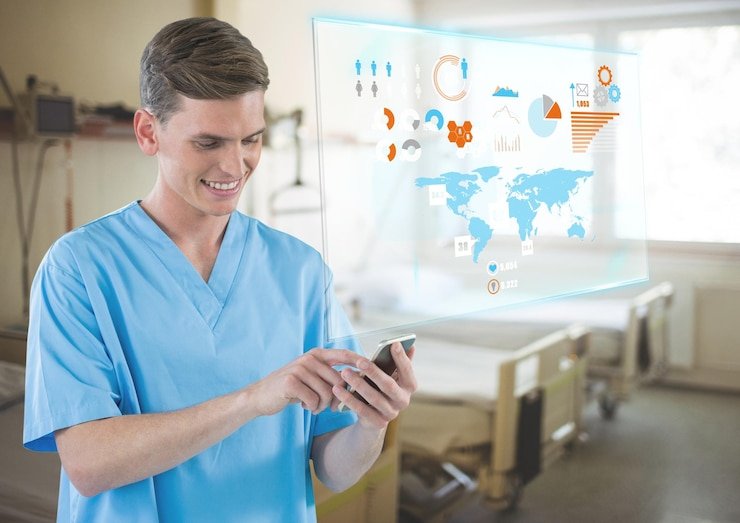Patient care technology is transforming healthcare delivery in ways that once seemed like science fiction. From automated patient monitoring to telehealth consultations, technology is enhancing both patient experience and professional efficiency. This blog post will explore the evolution, benefits, and future trends of patient care tech and provide actionable insights for healthcare professionals and technology enthusiasts.
Understanding Patient Care Technology
Patient care technology involves tools and systems that enhance the quality of care provided to patients. It encompasses everything from electronic health records (EHRs) and wearable devices to telemedicine platforms and robotic surgery assistance. At its core, patient care tech aims to improve patient outcomes, streamline workflows, and empower healthcare providers with timely and accurate information.
The Evolution of Patient Care Technology
Healthcare technology has come a long way over the past few decades. Initially, the focus was on automating fundamental tasks, such as recording patient data through EHRs. Over time, technology has increasingly integrated with medical devices, analytics, and artificial intelligence (AI) to provide more comprehensive care solutions.
- 1970s-1980s: The introduction of clinical information systems began revolutionizing patient tracking and data management.
- 1990s: The internet brought about telemedicine, allowing remote consultations and discussions between medical professionals.
- 2000s: Portable devices and wireless technology enabled real-time monitoring and mobile access to patient data.
- 2010s and beyond: AI and machine learning began to deliver predictive analytics, offering deeper insights into patient health trends and effective treatment models.
The Role of Patient Care Tech in Healthcare
The integration of technology into patient care has numerous applications that impact both healthcare providers and patients:
- Remote Patient Monitoring: Devices that track vital signs like heart rate and oxygen levels, enabling real-time data collection and proactive care.
- Telehealth Services: Provides greater access to medical consultations, especially for patients in rural or underserved areas.
- AI-Powered Diagnostics: AI algorithms assist in reading imaging scans and identifying potential health issues with greater speed and accuracy.
- Robotic-Assisted Surgeries: Enhance precision in complex procedures, reducing recovery time and hospital stays for patients.
Benefits and Challenges of Using Patient Care Tech

Benefits:
- Improved Patient Outcomes: Continuous monitoring and predictive analytics provide healthcare professionals with the data needed to intervene before complications arise.
- Enhanced Efficiency: Automated administrative tasks free up healthcare providers to spend more time with patients.
- Patient Empowerment: Patients have more control over their health data, allowing them to make informed decisions about their care.
Challenges:
- Privacy Concerns: Protecting patient data from cybersecurity threats is a significant challenge that requires robust, secure systems and protocols.
- High Implementation Costs: Advanced technologies can be expensive to implement and maintain, especially for smaller healthcare facilities.
- Training Needs: Healthcare staff needs ongoing training to keep up with rapidly evolving technologies.
Innovations in Patient Care Technology
Recent innovations have propelled patient care tech to new heights. Wearable devices, such as smartwatches and fitness bands, monitor vital health metrics and provide data that can guide treatment plans. Virtual Reality (VR) is being used for pain management and rehabilitation exercises, offering patients a more engaging and less invasive treatment modality. Additionally, blockchain technology is emerging to ensure secure and transparent patient data management.
Future Trends in Patient Care Technology
The future of patient care tech looks promising, with new trends set to revolutionize the industry:
- Personalized Medicine: AI and genomic data are converging to offer tailored treatment plans based on individual genetic profiles.
- Internet of Medical Things (IoMT): This will improve device connectivity, enabling seamless data flow and integration across various platforms.
- Augmented Reality (AR) in Education: AR is already being used to train surgeons by offering immersive simulation experiences.
Impact on Healthcare Professionals and Patients
For healthcare professionals, patient care technology means enhanced data access, allowing more accurate diagnoses and treatment plans. However, it also demands a continuous commitment to learning as new technologies emerge. For patients, these advancements offer better, faster, and more personalized healthcare experiences, though the digital divide could mean unequal access for some.
Best Practices for Implementing and Using Patient Care Tech
Healthcare organizations should follow these best practices to effectively leverage patient care technology:
- Invest in Staff Training: Regular training sessions will ensure staff are comfortable and adept with new technologies.
- Patient Education: Fully brief patients on how to use and understand technology, like wearables, to empower them in managing their own health.
- Collaborative Approach: Engage a cross-disciplinary team when implementing tech solutions to address all aspects of patient care and operational efficiency.
Real-life Examples of Successful Integration
Many healthcare facilities have successfully integrated patient care tech with remarkable results. For example, the Cleveland Clinic has implemented AI-driven platforms to assist with imaging diagnostics, significantly cutting down analysis time and boosting accuracy. Meanwhile, telehealth services have blossomed at the Mayo Clinic, where remote consultations raised patient numbers and overall satisfaction.
The Critical Role of Patient Care Tech in Healthcare’s Future
Patient care technology is redefining how healthcare is delivered and experienced. By enhancing efficiencies and yielding critical insights, these technologies have paved the way for a new era in patient care. For those keen to explore these technologies further and leverage their potential, engaging with platforms like Innovative Care Solutions and others as they emerge will be crucial.

